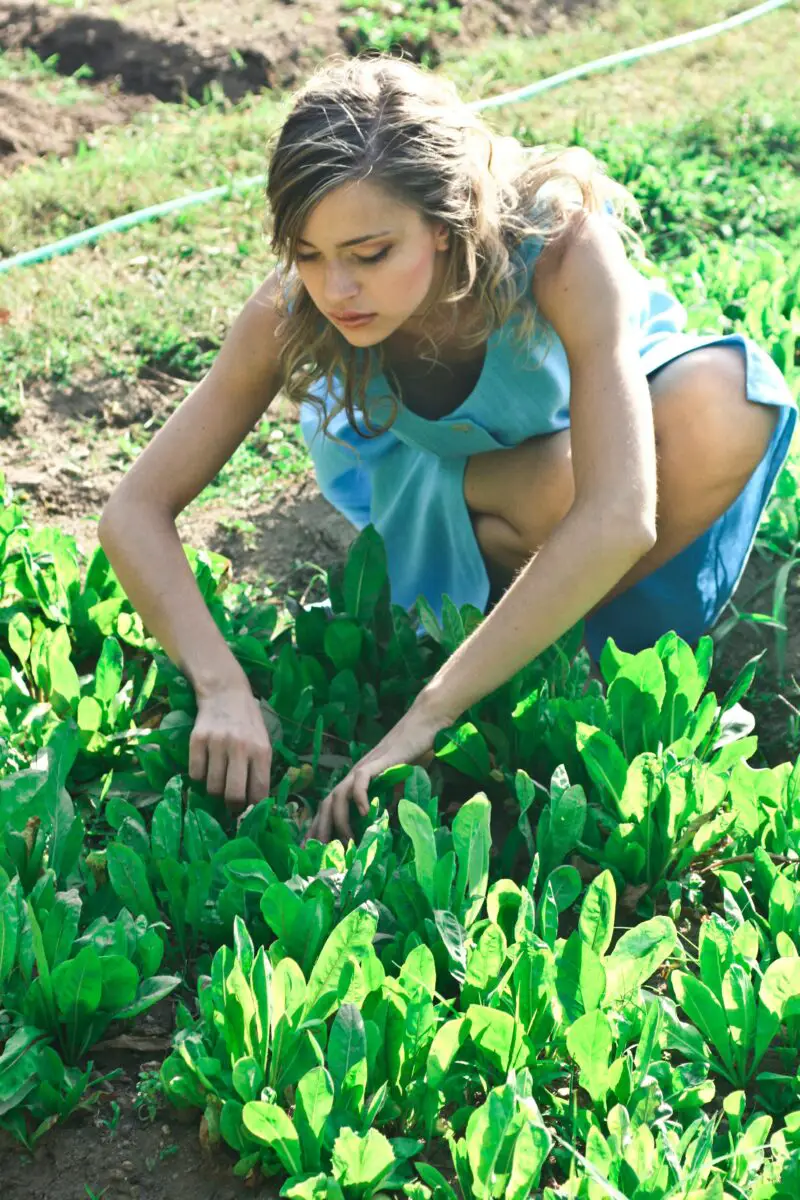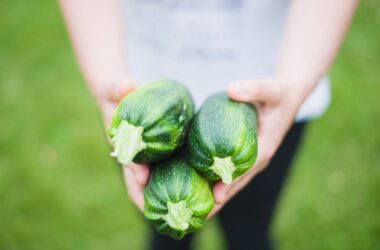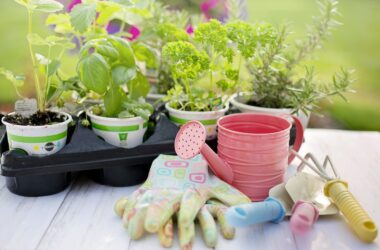Chaos gardening is a delightful, free-spirited approach to gardening that goes against the conventional grain of meticulous planning and organization. Imagine a garden where order takes a backseat, and nature is allowed to express itself freely. That’s chaos gardening in a nutshell. Rather than planting seeds in neat rows and maintaining strict control over every plant’s position, chaos gardening embraces randomness. Seeds are scattered with a carefree hand, allowing plants to grow where they may, resulting in a wild, natural, and often more visually interesting garden.
This method is perfect for those who love surprises and are willing to relinquish some control in favor of a more organic and spontaneous garden. Chaos gardening can transform your garden into a vibrant, diverse, and lively space that attracts a variety of beneficial insects, birds, and other wildlife, contributing to a healthier ecosystem.
The Philosophy Behind Chaos Gardening
The philosophy behind chaos gardening is rooted in a desire to mimic natural ecosystems. In nature, plants grow without human intervention, finding their own spaces and creating harmonious, dynamic environments. Chaos gardening aims to replicate this natural process, allowing plants to establish themselves in a way that feels authentic and unforced.
This method encourages biodiversity, which is crucial for a resilient garden. A diverse mix of plants can better withstand pests and diseases, support a range of wildlife, and contribute to healthier soil. By embracing the chaos, you are fostering a more sustainable and balanced garden ecosystem.
Tips for Beginners in Chaos Gardening
- Start with a Mix of Seeds: Gather a variety of seeds from different plants you love. Wildflowers, herbs, and fast-growing vegetables are excellent choices. Mix them together in a container. This diversity will not only make your garden more interesting but also support a wider range of pollinators and beneficial insects.
- Prepare the Soil: Loosen the soil in the area where you want to plant. Remove any large rocks, sticks, or debris to give your seeds a good start. You don’t need to till the soil extensively; just ensure it’s loose enough for seeds to settle in and germinate.
- Scatter Seeds Randomly: Now comes the fun part—scattering the seeds. Walk around your garden and sprinkle the seed mix freely. Don’t worry about spacing or depth—just let the seeds fall where they may. The randomness is key to achieving the chaotic, natural look.
- Lightly Cover and Water: Gently rake the soil to cover the seeds slightly, ensuring they make good contact with the soil. Then, water the area thoroughly. Keep the soil moist until the seeds germinate, but avoid overwatering. Consistent moisture will help the seeds sprout and establish themselves.
- Embrace the Chaos: Let go of control and allow the garden to grow naturally. You’ll get a mix of plants growing in unexpected patterns, creating a unique and beautiful garden space. Resist the urge to rearrange or tidy up too much. Part of the charm of chaos gardening is the unexpected combinations and natural interactions between plants.
- Observe and Enjoy: Watch how your garden evolves over time. You might need to do some light weeding to prevent overly aggressive plants from taking over, but otherwise, let nature do its thing. Enjoy the process of discovery as new plants emerge and bloom. Take note of what works well and what doesn’t, and adjust your seed mix in future seasons.
- Add Mulch: Once your plants start to grow, adding a layer of mulch can help retain moisture and keep weeds down, supporting your plants’ natural growth. Mulch also helps improve soil structure and fertility over time, contributing to a healthier garden ecosystem.
- Encourage Biodiversity: Planting a wide variety of seeds attracts beneficial insects, birds, and other wildlife, creating a thriving ecosystem in your garden. Consider including native plants, which are well-adapted to your local climate and soil conditions and provide essential habitat for local wildlife.
The Benefits of Chaos Gardening
Chaos gardening offers numerous benefits beyond just aesthetic appeal. Here are some key advantages:
- Reduced Maintenance: Traditional gardens often require meticulous care, including regular weeding, pruning, and fertilizing. In contrast, chaos gardening allows plants to grow naturally, reducing the need for constant intervention. Once established, your chaotic garden will largely take care of itself.
- Enhanced Biodiversity: By planting a diverse mix of species, you create a habitat that supports a wide range of pollinators, insects, and other wildlife. This biodiversity is crucial for a healthy garden ecosystem, as it helps control pests, improves soil health, and enhances pollination.
- Resilience to Pests and Diseases: A diverse garden is more resilient to pests and diseases. Different plants attract different beneficial insects, which help keep pest populations in check. Additionally, the variety of plants makes it harder for diseases to spread.
- Soil Health: The diverse root systems of different plants improve soil structure and fertility. Plants with deep roots help aerate the soil and bring nutrients to the surface, while those with shallow roots help prevent erosion. Over time, this leads to healthier, more fertile soil.
- Natural Beauty: There’s a unique beauty in a garden that grows naturally. The mix of colors, shapes, and textures creates a visually stunning landscape that changes with the seasons. Each visit to your garden will offer new surprises and delights.
- Environmental Benefits: Chaos gardening is environmentally friendly. It reduces the need for synthetic fertilizers and pesticides, which can harm beneficial insects and contaminate water sources. By promoting natural growth, you’re contributing to a healthier planet.
Practical Considerations for Chaos Gardening
While chaos gardening is less regimented than traditional gardening, there are still some practical considerations to keep in mind:
- Choose the Right Location: Select a spot in your garden that gets adequate sunlight and has good drainage. Most plants need at least six hours of sunlight per day, so choose a location that meets these requirements.
- Understand Your Soil: Conduct a soil test to understand its composition and pH level. While chaos gardening is less fussy about soil conditions, knowing your soil type can help you choose plants that will thrive in your garden.
- Be Patient: Chaos gardening is a long-term approach. It might take a few seasons for your garden to reach its full potential. Be patient and enjoy the process of watching your garden evolve.
- Use Native Plants: Incorporate native plants into your seed mix. Native plants are well-adapted to your local climate and soil conditions and require less maintenance. They also provide essential habitat for local wildlife.
- Control Aggressive Plants: Some plants can be overly aggressive and crowd out others. Keep an eye on your garden and remove or thin out plants that are taking over. This will help maintain a balanced ecosystem.
- Enjoy the Journey: Chaos gardening is as much about the journey as it is about the destination. Enjoy the process of discovering new plants, observing wildlife, and watching your garden grow and change over time.








